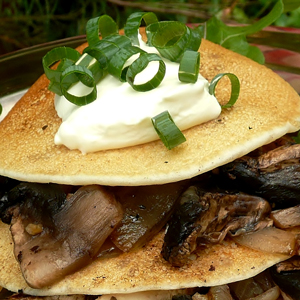In Eastern Australia, whether in town or country, early winter is the time of year for enjoying lingering breakfasts in a sunny corner of the garden or on a north-facing verandah. If there are flowering native shrubs and trees in the neighbourhood, the chances are pretty good for sharing your breakfast time with a few nectar-feeding birds.
 |
| Rainbow lorikeets |
 |
| Scaly breasted lorikeet |
Lorikeets are semi-nomadic, following the flowering and fruiting seasons of various native plant species. They play a role in cross-pollination, seed gemination, and pest eradication. The human tendency to put out seed or honey-soaked bread to keep these beautiful birds in the garden is understandable, but this can stop the birds from moving on at the end of normal span of the flowers’ season, and disrupts age-old patterns and processes vital to the welfare of bushland, other bird species and to the lorikeets themselves. We are better to enjoy them when they come, and let them go when nature tells them to.
 |
| Candlestick banksia |
The gardening gurus tell us that, if planting a bird-attracting garden, we should use flowering shrubs local to the area so that, at the right time, at the end of the flowering period, the birds will move on according to their normal cycle of travel. Then, when they return, there will be the renewed pleasure in the novelty of watching their antics.
PERFECTLY EASY PANCAKES with MUSHROOMS and ONION
Quick to make, this scrumptious but uncomplicated breakfast is just right for mornings when you want to laze about with an extra cup of tea and watch the visiting birdlife.
Note: Make pancake batter first, then prepare filling while batter rests, then cook pancakes and assemble.
You will need: Bowl and whisk or fork; cutting board and knife; small frypan or skillet and egg lift.
Time: 5 minutes to prepare; 5 minutes to cook filling; 2 minutes for each pancake.
Serves: 2
Pancake batter
1. In a bowl, place ½ cup milk, ½ cup water, 20 ml olive or other vegetable oil, ¼ teaspoon salt, ± 1 egg.
2. Add enough self-raising flour to make a thin batter (¾ cup should do). Beat with a fork or whisk. A few lumps won’t matter. Then rest the batter while onions and mushrooms cook.
Mushroom filling
Ingredients:
1 medium onion, finely sliced
good double-handful roughly chopped uncooked mushrooms (field, flat, button or Swiss brown mushrooms are all fine for this recipe)
fresh black pepper
juice of ½ lemon
clove garlic, crushed
1. Lightly fry sliced onion in splash of olive oil until just starting to colour.
2. Add crushed garlic, lemon juice and pepper then place chopped mushrooms on top of onion and put the lid on the pan.
3. Steam/cook on moderate heat undisturbed for 2 -3 minutes, or until heated through.
4. Tip mushrooms from pan into a bowl and cover to keep warm.
5. In the same frypan, still on moderate heat, slowly pour scant 1/3 cup batter onto the centre spot of the pan and let spread out in an even circle. (No need for any more oil.) Bubbles will form firstly around the edge, then in the centre. Wait until some central bubbles have broken - about 40 seconds - before you flip the pancake. The underside should be an even golden brown.
6. Repeat until batter is used - you should get six saucer-sized pancakes - assembling pancake stacks as you go. (Shown, below, with chopped shallot, low-fat yoghurt and peppery rocket leaves).
FROGBLOG TIPS:
- Don’t peel mushrooms - that is a waste of good flavour. Wipe the caps lightly with a damp cloth if you feel you have to.
- Pancake batter should rest 10 minutes or so before being cooked, allowing flour to swell and the mix to thicken slightly.
- All batter rises better with a touch of salt in the recipe.
- Egg is not an essential ingredient, making an easy menu option for camping or hiking. (The pancakes photographed were made without eggs).
- For dairy-free, substitute water for milk and add an egg for flavour and texture.
- For a gluten-free option, serve the mushrooms with soft or fried polenta, or on top of a good thick slice of gluten-free toast.
A LITTLE MORE ABOUT BIRDS. The other morning, not too early, I was drinking tea in the garden when this handsome fellow flew down beside me. At some stage in his nomadic circuit, he has become used to people. When I went in for my camera, he hopped over to investigate the cup and saucer I left behind.
 |
| Mr Handsome - (male) King parrot |
Next: Bubble and squeak for breakfast




No comments:
Post a Comment